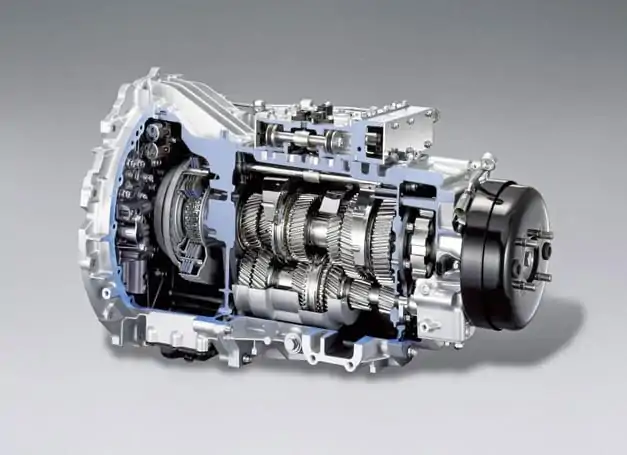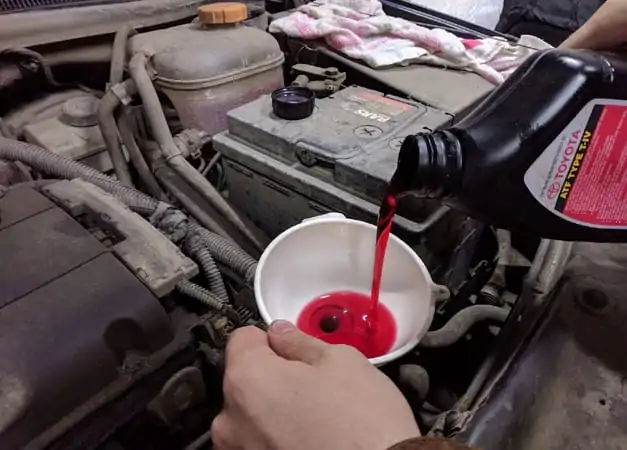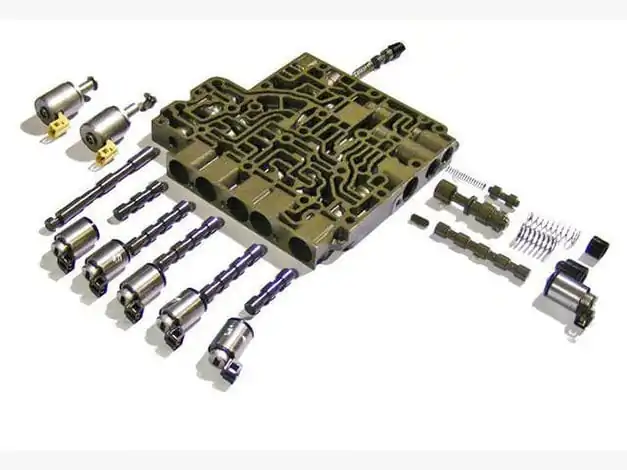
Signs of gearbox malfunction and what to do
Content
The gearbox is an integral part of a car's transmission. It operates in a constant load mode, transmitting torque from the engine to the axle shafts or cardan shaft. The gearbox is a complex mechanism that requires timely maintenance and repair. Over time, the transmission wears out, individual components and parts fail, as detailed below.
What is a car transmission?

The transmission is a bunch of complex components and assemblies that transmit and distribute torque to the drive wheels from the engine. A key role in the transmission is the gearbox. If the gearbox fails, the car may stop driving in any gear, or stop driving altogether.
The gearbox consists of a backstage, which, through the forks, moves the blocks of gears, shifting gears.
Signs of a failed transmission
You can find out about a gearbox malfunction by the following symptoms:
- gear shifting with difficulty
- inability to downshift the first time
- the transmission itself turns off
- increased noise (characteristic howl) during speed gain;
- oil is flowing from under the transmission.
The above symptoms require immediate intervention, otherwise there is a risk of failure of the entire unit.
The main malfunctions of the manual transmission and their causes
Common troubleshooting list:
The transmission does not turn on. There are several reasons for this:
- insufficient oil level;
- gear oil has lost its properties, does not minimize friction and does not remove enough heat;
- rocker or gear cable is worn out (rocker loosens, cable stretches);
- synchronizer wear
Increased work noise. Causes:
- wear of the bearing of the primary or secondary shaft;
- gear teeth wear;
- insufficient adhesion between gears.
Beats gear. Usually knocks out 2nd and 3rd gear, it is they who are often used by drivers in urban mode. Causes:
- synchronizer wear;
- wear of synchronizer couplings;
- failure of the gear selection mechanism or backstage.
The transmission hardly engages (you need to look for the necessary gears):
- backstage wear.
Leaks and low levels of fluids

A manual gearbox has a minimum of 2 oil seals - for the input shaft and the secondary, or for half shafts. Also, the housing may consist of two parts, as well as a pallet that is sealed with sealant or gasket. During the operation of the gearbox, the seals fail due to vibration of the shafts, which, in turn, vibrate from bearing wear. Natural aging (oil seal dubbing) is also one of the reasons why oil flows.
Often, oil flows from under the sump; the cause may be the uneven plane of the transmission sump, wear of the gasket and sealant. Depending on the extent of the problem, the oil may go away for years or several years. Since in many manual gearboxes the oil level barely exceeds 2 liters, the loss of 300-500 grams will significantly affect the life of the rubbing components. If the checkpoint provides a level probe, this will facilitate the control process.
Solenoid malfunction

The problem with the solenoids arises on robotic and automatic transmissions. The solenoid is used to control the flow of gear oil, that is, it controls the mode of operation of the gearbox. With a lack of gear oil, in this case ATF, the solenoids begin to work incorrectly, provoking an untimely gear shift. Hence, the shift to a higher gear is accompanied by sharp jerks and slippage, and this is an early wear of the clutch package and oil pollution.
Adhesion problems
The most common cause of gearbox problems is the clutch. A conventional clutch consists of a basket, driven disc and release bearing. The release bearing is pressed by a fork, which is pressed by the engine by means of a cable or a hydraulic cylinder. The clutch decouples the gearbox and the internal combustion engine to enable gear shifting. Clutch malfunctions that make it difficult or impossible to shift:
- wear of the driven disk, which means that the distance between the flywheel and the basket is minimal, the transmission will switch with a rattle;
- release bearing failure
- clutch master or slave cylinder
- clutch cable tension.
The main indicator that the clutch pack needs to be replaced is that the car starts off from 1500 rpm and above.
In the automatic transmission, the clutch plays the torque converter, which consists of a clutch package. GDT is lubricated by oil, but sharp acceleration, slippage, insufficient oil and its contamination shorten the life of the “donut”, while the gear shift in automatic transmission is deteriorating.
Worn needle bearings

The gears on the output shaft of the manual transmission are mounted on needle bearings. They serve to ensure the alignment of shafts and gears. On this bearing, the gear rotates without transmitting torque. Needle bearings solve two problems: they simplify the design of the gearbox and provide axial movement of the clutch to engage the gear.
Recommendations for the operation and maintenance of manual transmission

- The oil level must always comply with the factory recommendations. The main thing is not to pour the oil, otherwise it will squeeze out through the oil seals.
- Even if the manufacturer reports that the oil in the gearbox is enough for the entire service life. Subject to such recommendations, your transmission will immediately fail. For manual transmissions, the oil change interval is 80-100 thousand km, for automatic transmissions from 30 to 70 thousand km.
- Change the clutch in a timely manner, otherwise insufficient squeezing will provoke early wear of synchronizers.
- At the slightest manifestation of a gearbox malfunction, contact a service center in a timely manner.
- Pay attention to the gearbox mounts, during wear of which the transmission will “hang out”, and the gears will tightly engage and turn off spontaneously.
- Timely diagnosis is the key to the durability of the unit.
- A moderate riding style without slipping will allow the checkpoint to serve the required time.
- Engage and disengage gears with clutch only.
Questions and answers:
How does a transmission malfunction manifest itself? In mechanics, this is often accompanied by difficulty with shifting and crunching / grinding when shifting. Automatic transmissions have their own signs of malfunction, depending on the type of unit.
What most often breaks down in automatic transmission? Lever rocker, wear of the seals (oil leaks, the torque converter does not work efficiently), malfunctions in the control unit. Breakdown of the torque converter after loads without preheating.
Why did the gearbox stop working? The drive gear of the oil pump has broken, the oil level is low, the clutch is worn out (on a mechanic or a robot), a sensor is out of order (for example, the frog does not turn on the taillight - the box will not be removed from the parking lot).

4 comment
Natalie vega
I have a jac s5 turbo from 2015 it had an ugly noise when accelerating they changed the clutch kit it was good
But there is little noise like a cricket and when I step on the drunken thoroughly it stops sounding, which may be I need help, please thank
jasko
Audi A3 2005 1.9 tdi 5 speed built-in sachs
Clutch new sub-pedal cylinder everything goes normally only on idle has an ugly sound from the gearbox as if you hear occasional buzzing as if something is grinding only in idle while the car is standing
jasko
Halo
frano
Peugeot rifter transmission jumps out of gear on a downhill.